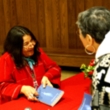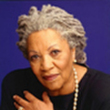The last report on the miracles at Little No Horse
Description
More Details
9780060797966
9780061748172
Excerpt
Similar Titles From NoveList
Similar Authors From NoveList
Published Reviews
Booklist Review
It's high time to acknowledge that Erdrich's ongoing sequence of novels about Native American life on an Ojibwe reservation in North Dakota over the last century stands at the pinnacle of recent American fiction. Her latest exploration of the interlocking lives of several generations of characters from her fictional reservation works beautifully as a reprise of all that has come before: the action, centered on the life of a priest who served the reservation for nearly a century, jumps back and forth in time, offering a chance for various figures from the principal families in Erdrich's world--Nanapush, Kashpaw, Pillager, Morrisey--to cross the stage once more, viewing life, as always, with passion, poetry, and a self-sustaining sense of the absurd. This time, though, all of that is glimpsed through a new and compelling filter: Father Damien, who is, in fact, Agnes De Witt, the common-law wife of a murdered German farmer, who through a typically absurd sequence of events, finds her mission in life by impersonating a dead priest. As Father Damien, in his (her) 90s and nearing death, attempts to explain to a younger priest why Sister Leopolda should not be made a saint, we experience the history of the reservation from the unique point of view of an outsider who gradually, under the tutelage of the wise and hysterically funny Nanapush, throws in her spiritual lot with the Ojibwe. (Erdrich, always a master of the set piece, outdoes herself here with the tall tale of Nanapush's encounter with a frightened moose, perhaps the most wonderfully comic sequence in the author's entire oeuvre.) This is Erdrich writing at the peak of her powers, embracing both the earthy sensuality and abiding spirituality of her characters and energizing the whole with a raucous humor that is at once self-deprecating and life-enhancing. --Bill Ott
Publisher's Weekly Review
Erdrich renders her North Dakota world of the Ojibwe with a lyrical and richly metaphorical prose style. Her narrative is interspersed with dozens of comic, tragic and all-too-human stories that illuminate her lively, complex and often bizarre Ojibwe people and the priests who come to convert them and minister to their needs. She compassionately portrays Father Damien (n?e Agnes DeWitt) through worldly and spiritual joy, confusion and crisis. Erdrich commingles and explores many world views as Father Damien's life and thought are continually and profoundly reshaped by the lives, events, rites and rituals of the parishioners who come to love him so deeply. But some of the book's strengths become problems for listeners e.g., complicated family relations, complex exposition, confusing jumps back and forth between different time frames throughout an entire century. Fields has a pleasing voice, a fine feel for the material and the characters and a knack for low-key dramatization. But she has a narrow vocal range that becomes tiresome through 14.5 hours of tape. Based on the HarperCollins hardcover. (Apr.) (c) Copyright PWxyz, LLC. All rights reserved
Library Journal Review
Erdrich returns to a world created through the last dozen years and five novels to view a century's worth of Ojibwe suffering via the letters and memoirs of Father Damien Modeste. One major surprise of the book is revealed right at the start as the elderly priest is revealed to be a woman, but other mysteries of faith and sainthood are explored in "his" letters and richly detailed flashbacks. The twists and turns of gender, belief, and love are woven through beautifully crafted passages filled with deep sorrow and loss. Erdrich's focus is as much on the physical as the divine in the evolving conflicts between church and mysticism, history and legend, and truth and faith. The question of whether Sister Leopolda deserves to be a saint may be the storyteller's quest, but the tale's ultimate resonance is the tragic strength of its characters. Narrator Anna Fields may tend to rush from section to section, but she handles the complexity of changing voices and identities well. A sad and difficult work; recommended. Joyce Kessel, Villa Maria Coll., Buffalo, NY (c) Copyright 2010. Library Journals LLC, a wholly owned subsidiary of Media Source, Inc. No redistribution permitted.
Kirkus Book Review
The North Dakota world of interrelated Native American families that Erdrich has shaped into a myth of Faulknerian proportions is once again the province of her extraordinary sixth novel: a worthy companion to such triumphs as Love Medicine (1993) and The Antelope Wife (1998). The action covers a span of nearly 90 years, and focuses primarily on two dramatic figures: "Sister Leopolda" Puyat, who has performed "miracles" of service at the Little No Horse Ojibwa reservation; and "Father Damien" Modeste, the resident priest who is actually Agnes De Witt: common-law wife of a murdered German immigrant farmer, lover of Chopin, and "Virgin of the Serpents," among other manifestations. Erdrich takes huge risks in this boldly imagined novel's early pages, which are replete with complicated exposition, while slowly building narrative and thematic bridges linking the aforementioned characters with figures familiar from her earlier fiction: stoical Fleur Pillager and her estranged, doomed children; mischief-making Gerry Nanapush, comforted and tormented by his several wives (not to mention a terrified moose, in a hilarious tall tale that's in itself a minor classic); Father Damien's stolid housekeeper (and keeper of "his" secret) Mary Kashpaw; and a very many others. Erdrich revisits and hovers over her people, recording their experiences and words and dreams, observing them from multiple perspectives and in various contexts. The result is a remarkably convincing portrayal of Native American life throughout this centurywith the added dimension of an exactingly dramatized and deeply moving experience of spiritual conflict and crisis. The question of Sister Leopolda (a paragon of charity who may also have been a murderer) is posed unforgettably: "What weighs more, the death or the wonder?" And the passion of Father Damien, which climaxes with a gravely beautiful pilgrimage, is, throughout the story, a wonder to behold. Comparisons to Willa Cather (particularly her Death Comes for the Archbishop ) as well as Faulkner now seem perfectly just. That's how good Erdrich has become. First serial to the New Yorker; Book-of-the-Month Club/Quality Paperback Book Club selection; author tour
Booklist Reviews
/*Starred Review*/ It's high time to acknowledge that Erdrich's ongoing sequence of novels about Native American life on an Ojibwe reservation in North Dakota over the last century stands at the pinnacle of recent American fiction. Her latest exploration of the interlocking lives of several generations of characters from her fictional reservation works beautifully as a reprise of all that has come before: the action, centered on the life of a priest who served the reservation for nearly a century, jumps back and forth in time, offering a chance for various figures from the principal families in Erdrich's world--Nanapush, Kashpaw, Pillager, Morrisey--to cross the stage once more, viewing life, as always, with passion, poetry, and a self-sustaining sense of the absurd. This time, though, all of that is glimpsed through a new and compelling filter: Father Damien, who is, in fact, Agnes De Witt, the common-law wife of a murdered German farmer, who through a typically absurd sequence of events, finds her mission in life by impersonating a dead priest. As Father Damien, in his (her) 90s and nearing death, attempts to explain to a younger priest why Sister Leopolda should not be made a saint, we experience the history of the reservation from the unique point of view of an outsider who gradually, under the tutelage of the wise and hysterically funny Nanapush, throws in her spiritual lot with the Ojibwe. (Erdrich, always a master of the set piece, outdoes herself here with the tall tale of Nanapush's encounter with a frightened moose, perhaps the most wonderfully comic sequence in the author's entire oeuvre.) This is Erdrich writing at the peak of her powers, embracing both the earthy sensuality and abiding spirituality of her characters and energizing the whole with a raucous humor that is at once self-deprecating and life-enhancing. ((Reviewed February 15, 2001)) Copyright 2001 Booklist Reviews
Library Journal Reviews
Already thrice excerpted in The New Yorker, this work features Father Damien, devoted servant of the Ojibwa people, whose past is catching up with him. FREDRIKSSON, Marianne. Copyright 2000 Cahners Business Information.
Library Journal Reviews
Readers of Erdrich's new work know right away that it concerns a mystery the elderly Father Damien Modeste, who has served on an Ojibwa reservation for decades, says as much in the impassioned missive to the Pope that opens the book. And the mystery is not that Father Damien Modeste is actually a woman in disguise, a startling secret that gets spilled in the next few pages. There is much more to come in this rich, sprawling tale (overwritten but beautifully overwritten) as it makes an anguished plunge into the past occasioned by the appearance of Father Jude Miller, sent to ascertain whether Sister Leopolda deserves sainthood. The answer to his quest lies buried in a tangled web of reservation history, and as it is slowly unwound, we encounter white abuse, Native suffering and survival, and religious and sexual ecstasy (sometimes conjoined), plus Pillagers, Morrisseys, Kapshaws, and other characters readers of Erdrich (The Antelope Wife) already know. The initial sense, then, is of treading old ground, but as the novel unfolds, it gathers strength like a giant thunderhead and strikes one right through the heart. The investigation of art as mainstay and revelation is particularly sharp, and one hopes Erdrich will pursue this line of thought in her next work. Highly recommended. [Previewed in Prepub Alert, LJ 12/00.] Barbara Hoffert, "Library Journal" Copyright 2001 Cahners Business Information.
Publishers Weekly Reviews
Erdrich seems to be inhabiting her characters, so intense and viscerally rendered are her portrayals. Her prose shimmers: a piano being carried across the plains is "an ebony locust." This novel will be remembered for a cornucopia of set pieces, all bizarre and stunning: wounded and taken hostage by a bank robber and pinned to the running board of his Overland automobile, Agnes, "her leg a flare of blood," briefly touches hands with her astonished lover as the car crosses his path; old man Nanapush, impaled on fish hooks that pin him to a boat that's hitched to the antlers of a wounded moose, careens through the woods in delirious exhaustion. Writing with subtle compassion and magical imagination, Erdrich has done justice to the complexities of existence in general and Native American life in particular. First serial selections in the New Yorker have whetted appetites for this novel, and picks by BOMC and QPB, major ad/promo and an author tour will give it wide exposure. (Apr.) Copyright 2001 Cahners Business Information.










































